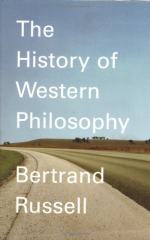|
This section contains 660 words (approx. 2 pages at 400 words per page) |

|
Book 2: Catholic Philosophy, Introduction Summary and Analysis
Catholic philosophy was adopted as the main thought in Europe from Augustine to the Renaissance. There were also other philosophers such as Fathers, Thomas of Aquinas at other times, but Augustine initiated building up the Catholic synthesis. There were more able philosophers, such as Stoics and Neoplatonists, while those that emerged after the Renaissance failed to carry the Scholastic or the Augustinian tradition.
The power of the Church was prevalent in the period from about AD 400 to AD 1400. Its influence was part of philosophy, creed, and sacred history. Its creed allowed for power it exercised. The majority of the population believed in Catholic faith although there were traditions, such as Roman and Germanic. The Roman tradition prevailed among the lawyers in Italy while the German among the feudal aristocracy although they failed to oppose the...
(read more from the Book 2: Catholic Philosophy, Introduction Summary)
|
This section contains 660 words (approx. 2 pages at 400 words per page) |

|




